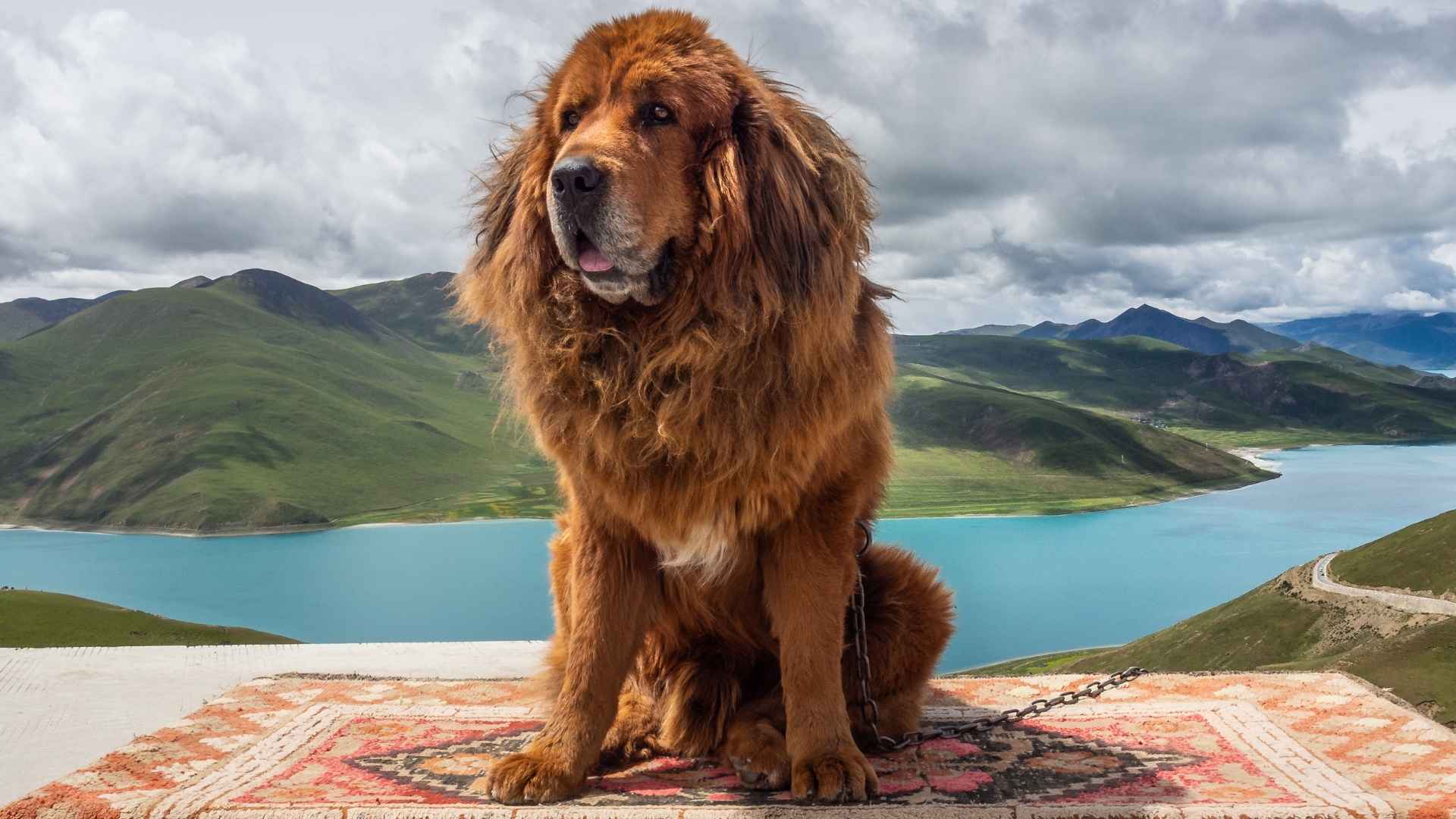Dogs have done more than just fetch sticks and dig up flower beds—they’ve marched beside warriors, guarded temples, graced royal courts, and even made appearances in ancient mythology.
Some breeds are more than pets; they’re woven into the very fabric of history and culture, carrying stories, traditions, and symbolism that span centuries and continents. From the Akita’s loyalty in Japan to the regal Saluki of the Middle East, these dogs aren’t just beloved companions—they’re cultural icons.
They’ve been trusted protectors, spiritual symbols, and symbols of status, their legacy honored in everything from literature to national folklore. Their shapes, temperaments, and histories are shaped not just by nature, but by the civilizations that bred and revered them.
We’ll explore the dog breeds that come with more than wagging tails—they come with centuries of purpose and meaning. Whether you’re a history buff, a world traveler, or someone who appreciates depth and tradition, these culturally significant pups offer more than cuddles.
They bring legacy, legend, and a bit of canine nobility. Ready to meet the four-legged faces of history? Let’s begin.
Dog Breeds with Cultural Significance
1. Saluki
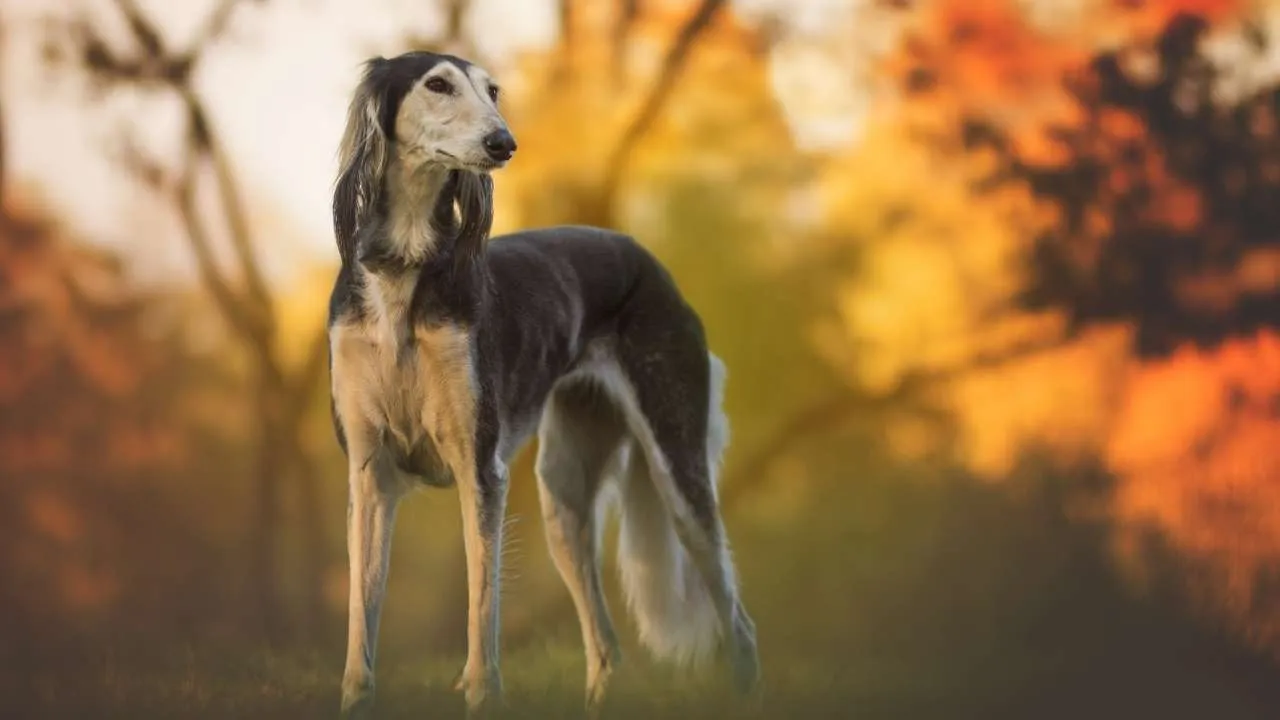
Imagine a dog so ancient and elegant, it’s basically the original runway model of the canine world. Enter the Saluki—born in the Fertile Crescent around 7000 B.C., making it one of the oldest known domesticated dog breeds.
These long-legged beauties were treasured by ancient Middle Eastern civilizations, especially in Egypt, where they were crowned “Royal Dog of Egypt.” Talk about a pedigree!
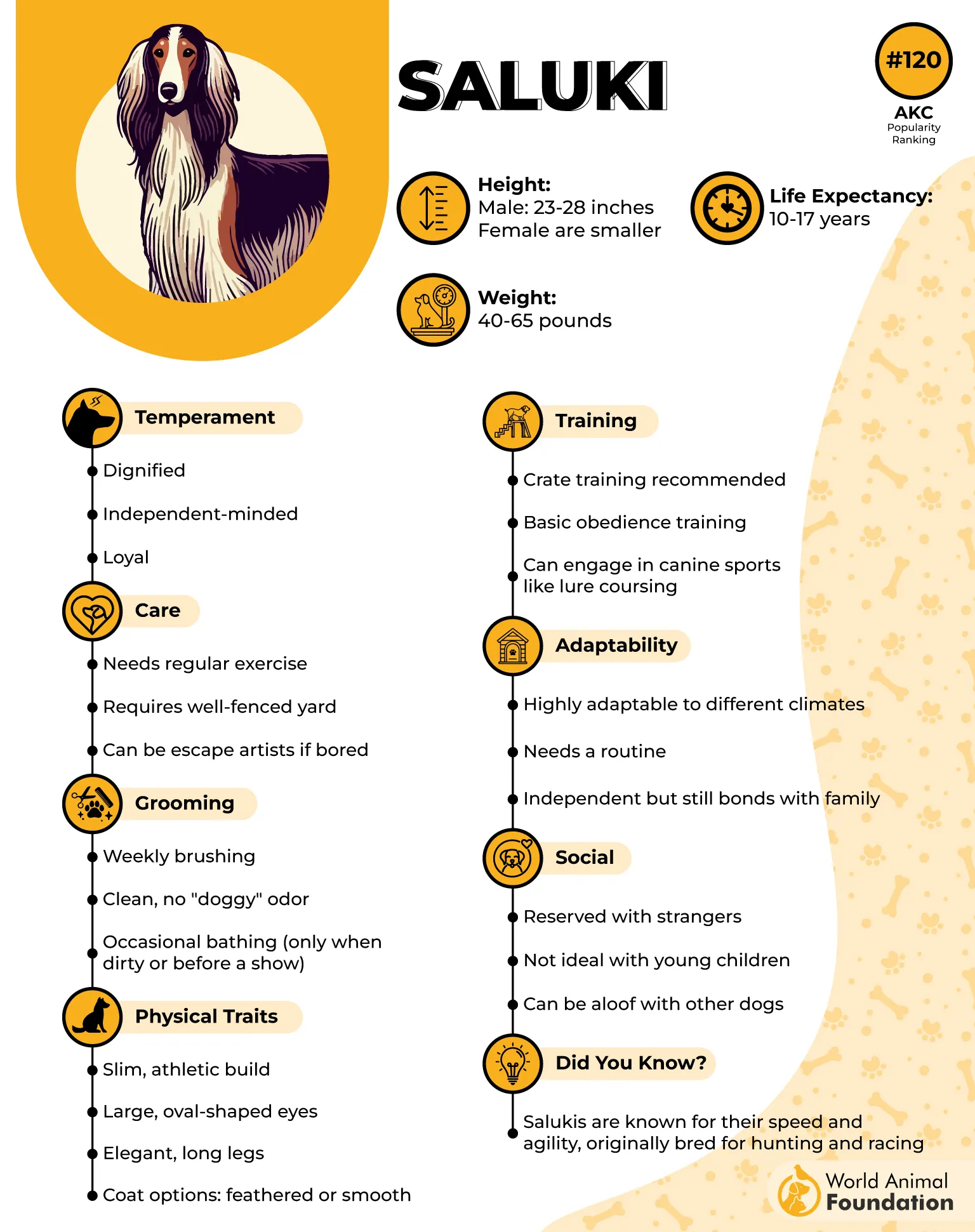
With their silky, feathered ears and lean, aerodynamic build, Salukis look like they were designed by Mother Nature herself for high-speed desert chases. They’re fast, graceful, and carry an air of quiet dignity that hints at their noble past. Despite their sleek exterior, Salukis are gentle and affectionate with their humans—a perfect blend of speed and soul.
Salukis aren’t naturally aggressive, so they don’t make the best watchdogs. However, they’re quite alert and will let their owners know when strangers are nearby.
They can be a bit reserved around new people. Widely admired for their exotic, graceful appearance, Salukis are spirited and independent hunters, not a perfect fit for every household.
Cultural scoop: Salukis were so prized that they were often buried alongside their owners in ancient tombs, a testament to the deep bond and reverence these cultures had for them.
Fun fact: These dogs have incredible endurance and can run for miles at top speed, making them the true marathoners of the dog world.
2. Tibetan Mastiff
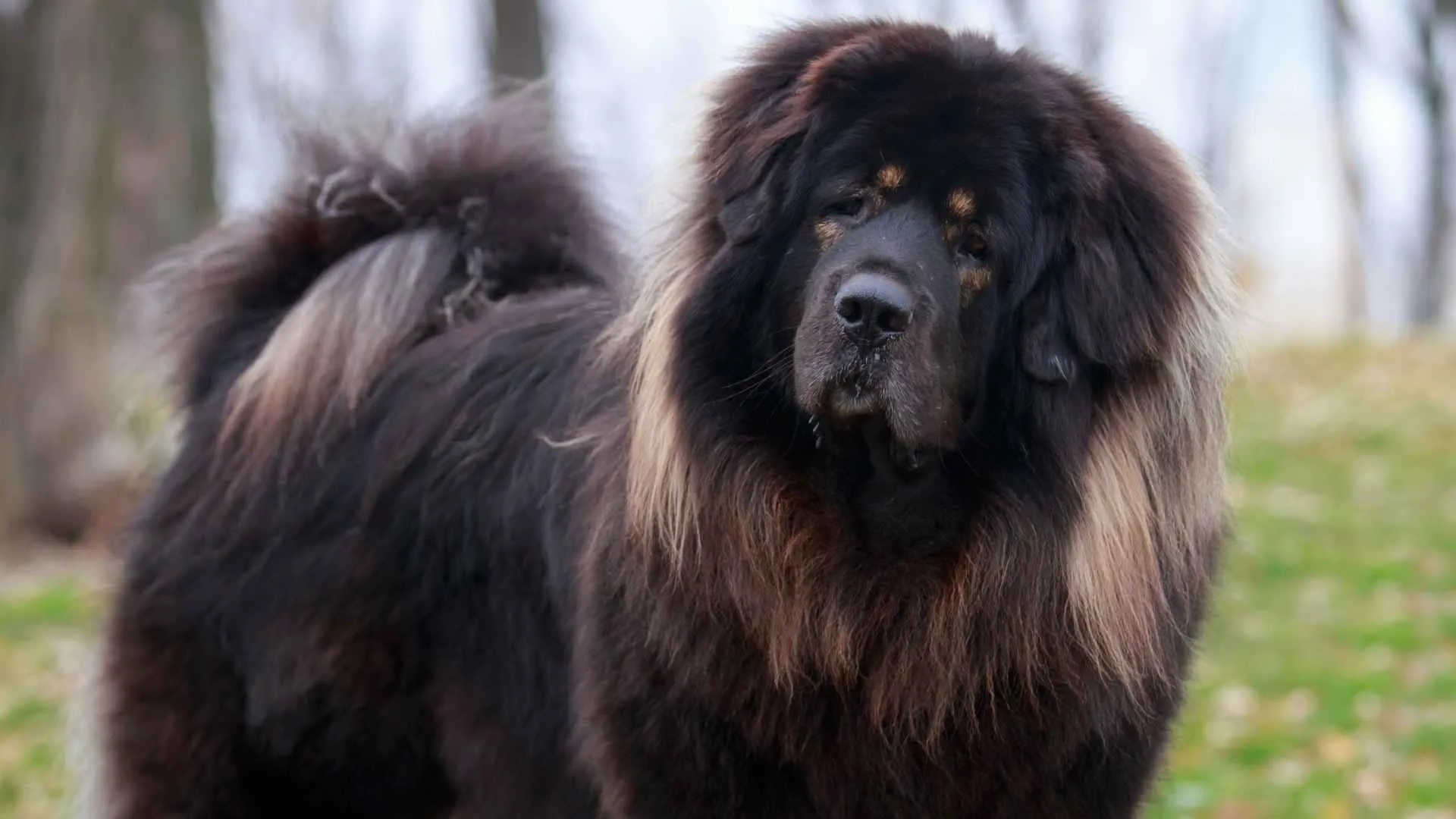
If mountains had a mascot, it would definitely be the Tibetan Mastiff. These massive, fluffy powerhouses were bred by monks high in the Himalayas to guard sacred temples against anything from wild animals to wandering spirits. Imagine a dog that’s part guardian, part fluffy mountain deity—now you’ve got a Tibetan Mastiff.
This giant breed weighs between 70 and 150 pounds and sports a commanding presence: a broad, muscular build, a large square-shaped muzzle, recessed eyes, and a feathered tail that curls over their back.
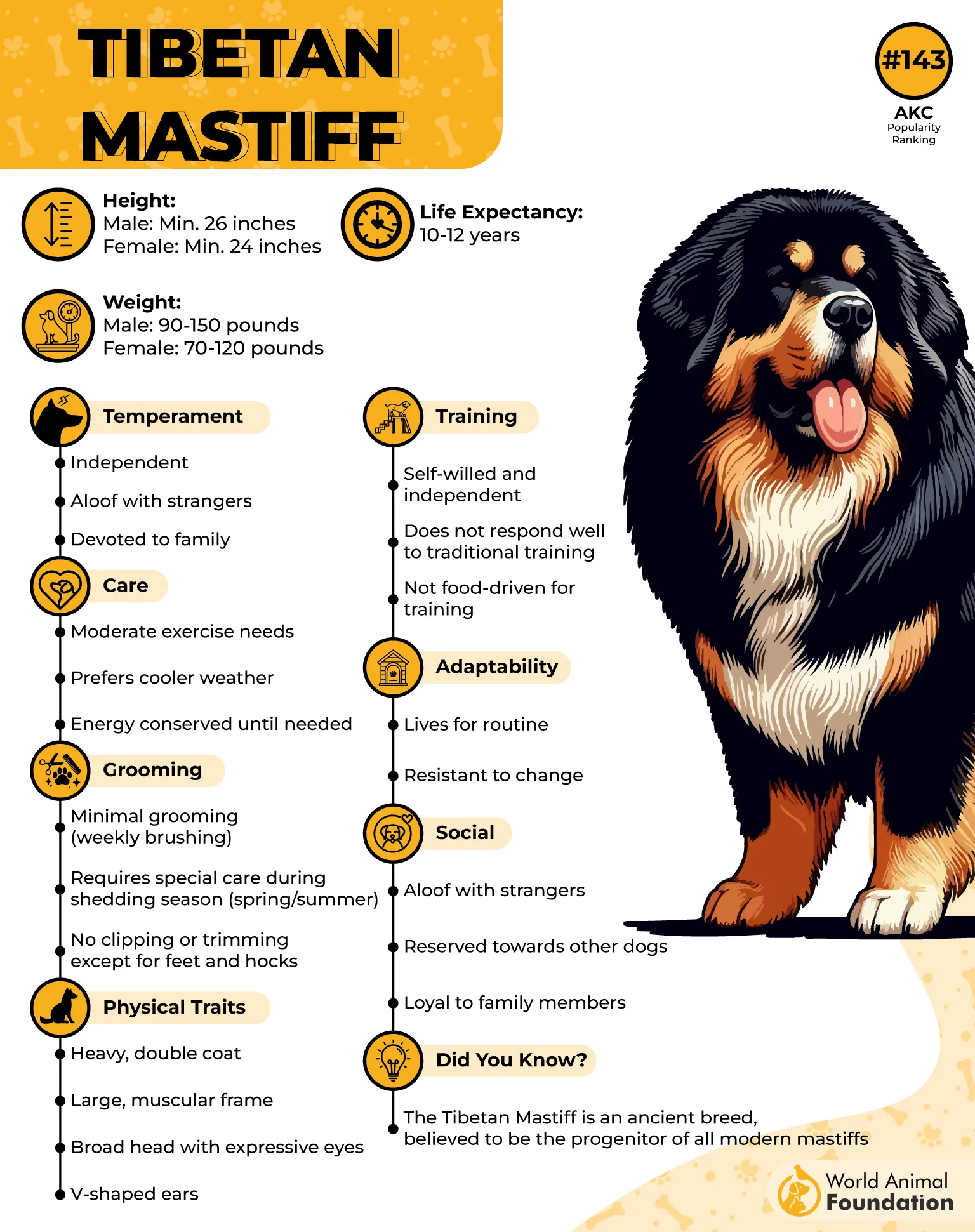
With their thick double coat, lion-like mane, and booming bark, Tibetan Mastiffs look like they just stepped off a mountaintop throne, ready to protect their domain. Despite their intimidating size, these gentle giants are fiercely loyal and surprisingly affectionate with their family.
Cultural vibe: In Tibet, these dogs are more than pets—they’re sacred protectors and symbols of strength and endurance. They were so valuable that they were often given as gifts to important guests or used as dowries.
Though powerful and agile, Tibetan Mastiffs lack endurance, so they’re not great jogging companions despite their impressive size and strength.
Fun fact: Tibetan Mastiffs have a surprisingly independent streak, sometimes described as “cat-like” in their aloofness—perfect for those who appreciate a dog with a mind of its own.
3. Akita
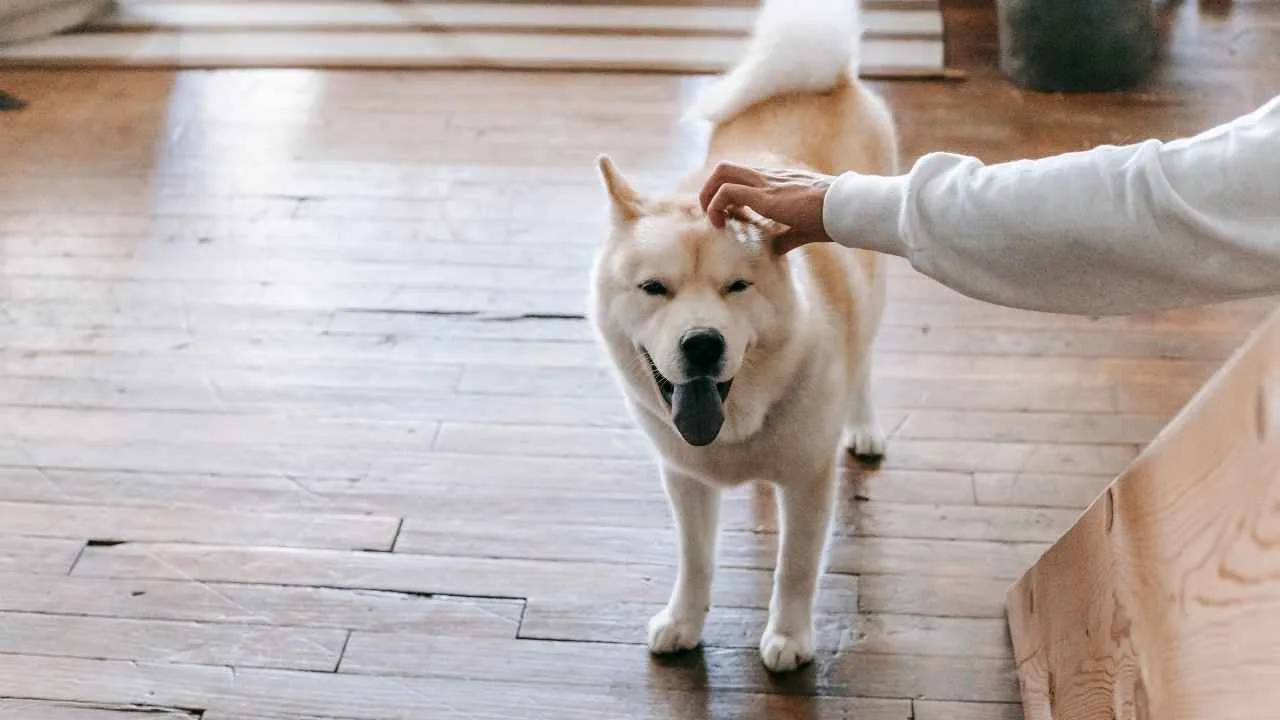
When it comes to legendary loyalty, the Akita sits at the top of the honor roll. This majestic Japanese breed is famous worldwide thanks to the heartwarming story of Hachiko, the Akita who waited every day at Shibuya Station for his owner, years after his owner had passed.
Talk about devotion goals! Akitas are big, strong, and imposing, but underneath that thick coat and powerful build lies a gentle, fiercely loyal companion
Originally bred as hunting and guard dogs in Japan’s snowy mountains, Akitas carry a noble presence and a calm confidence that commands respect.
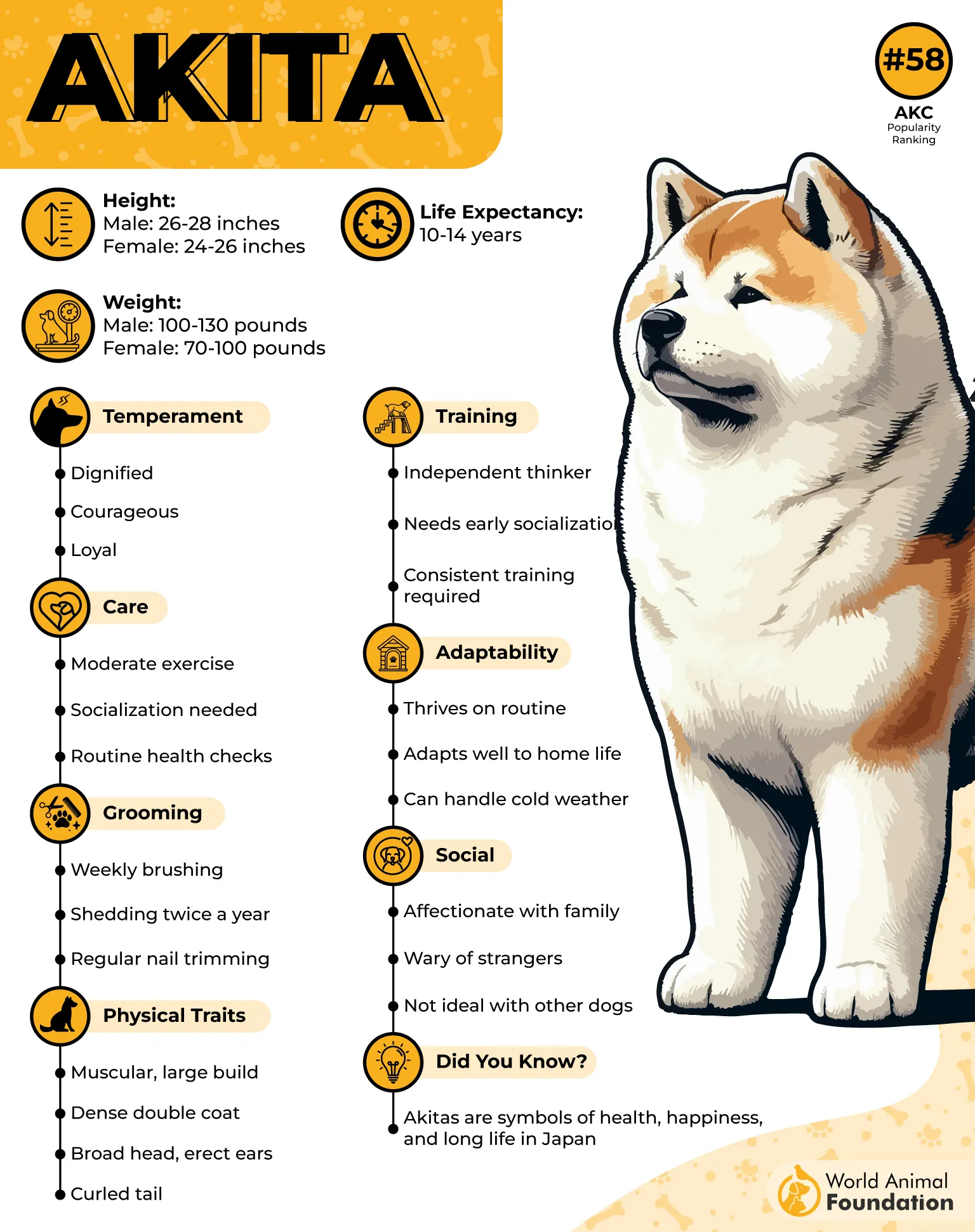
Akitas bear a strong resemblance to the smaller Shiba Inu, with their foxlike face, pointed triangle ears, thick plush coat, and curled tail. But unlike the 20-pound Shiba, Akitas are large dogs, weighing 70–130 pounds and standing 24–28 inches tall.
They’re known for being protective family guardians who bond deeply with their people, but don’t mistake their calm for weakness. These dogs are courageous and independent thinkers, with a quiet dignity that makes them unforgettable.
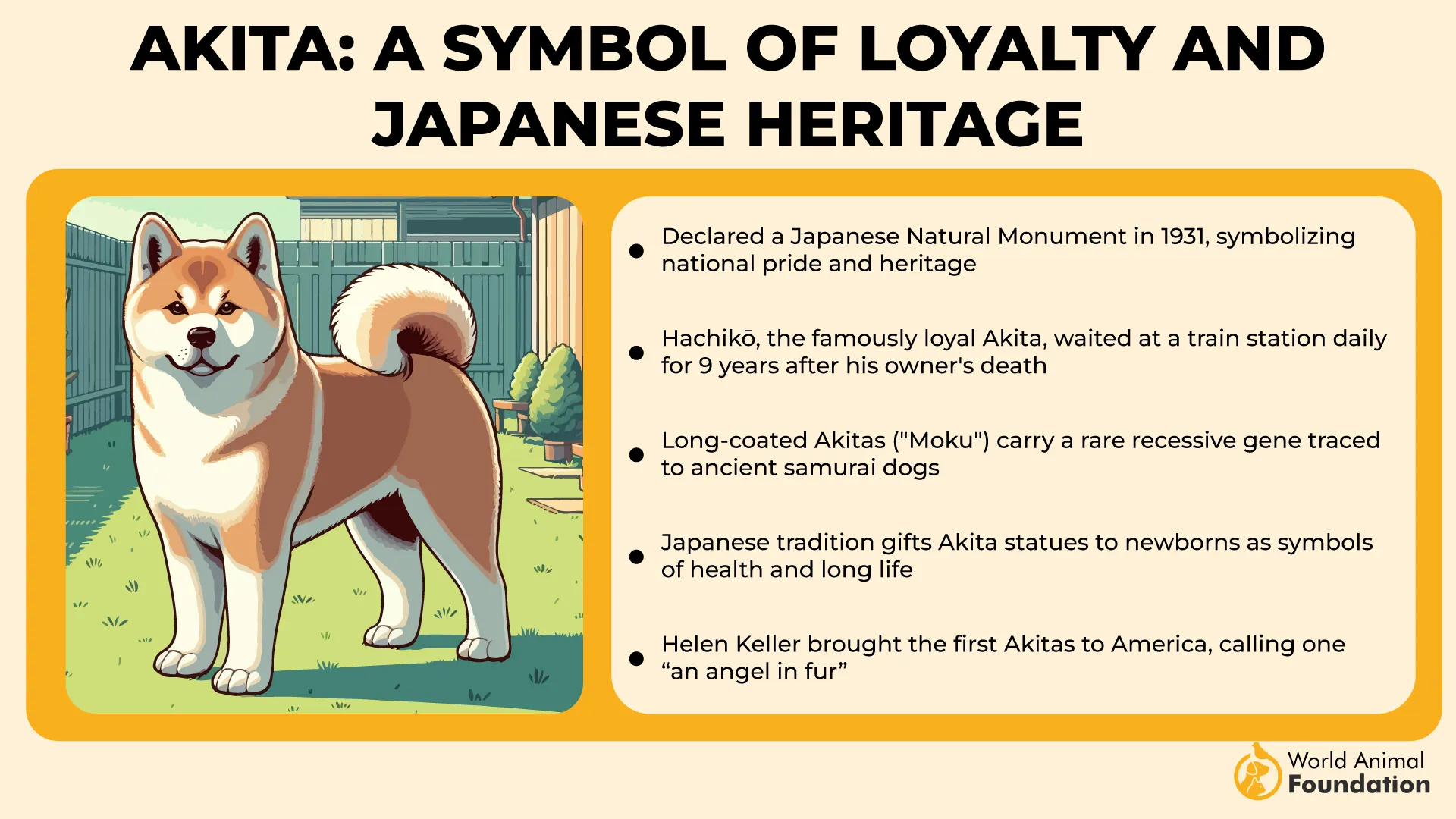
Cultural vibe: In Japan, the Akita is a symbol of good health, happiness, and long life. Statues of Hachiko can be found near train stations as a tribute to loyalty itself, making the Akita more than just a dog—it’s a cultural icon.
Fun fact: Despite their size, Akitas can be surprisingly playful and goofy when they trust you—proof that even legends have a silly side!
4. Xoloitzcuintli
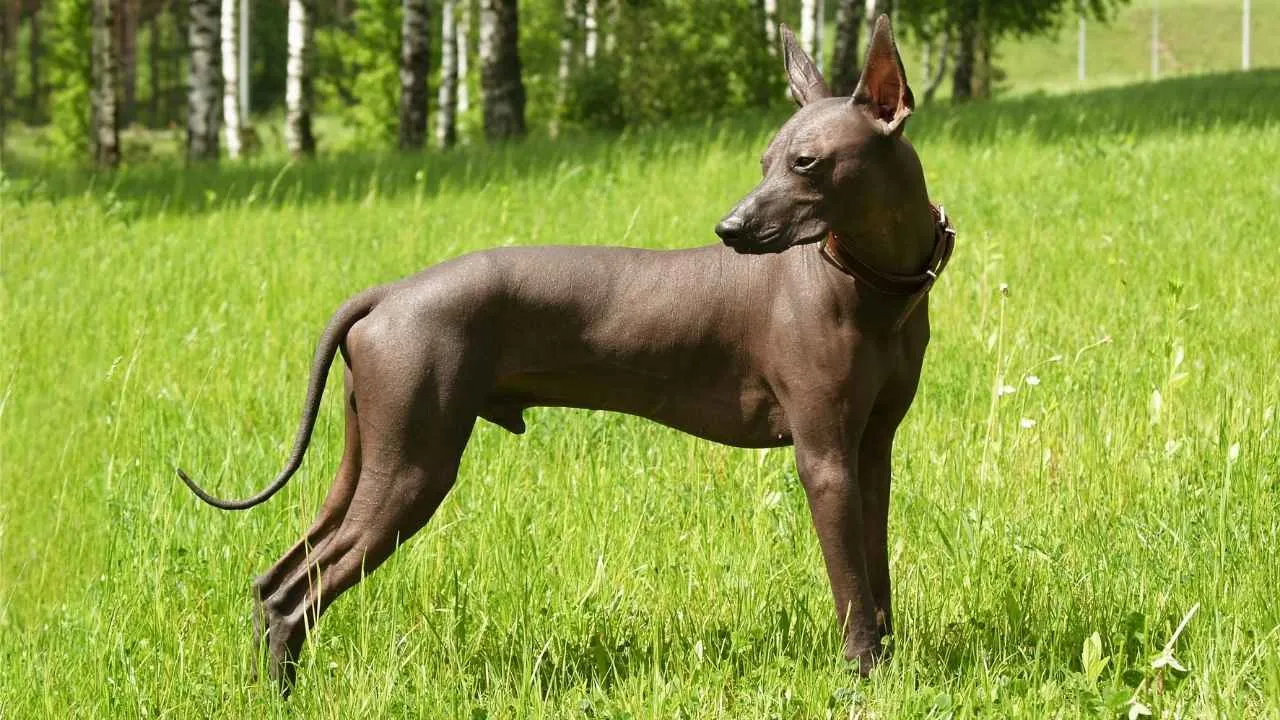
Say “Xolo” (pronounced SHOW-lo) and you’re speaking the name of one of the world’s oldest dog breeds—native to Mexico and dating back over 3,000 years. This breed’s name means “dog of Xolotl,” the Aztec god of lightning and death, who was believed to guide souls to the afterlife. Talk about cultural weight!
Naturally developed by thousands of years of natural selection, Xolos tend to be healthier and structurally sound compared to many heavily bred dogs.
Originating in tropical climates, they don’t do well in colder regions and are best kept as indoor companions. The Xolo is instantly recognizable for its hairless body, sleek physique, almond-shaped eyes, large bat-like ears, and long neck.
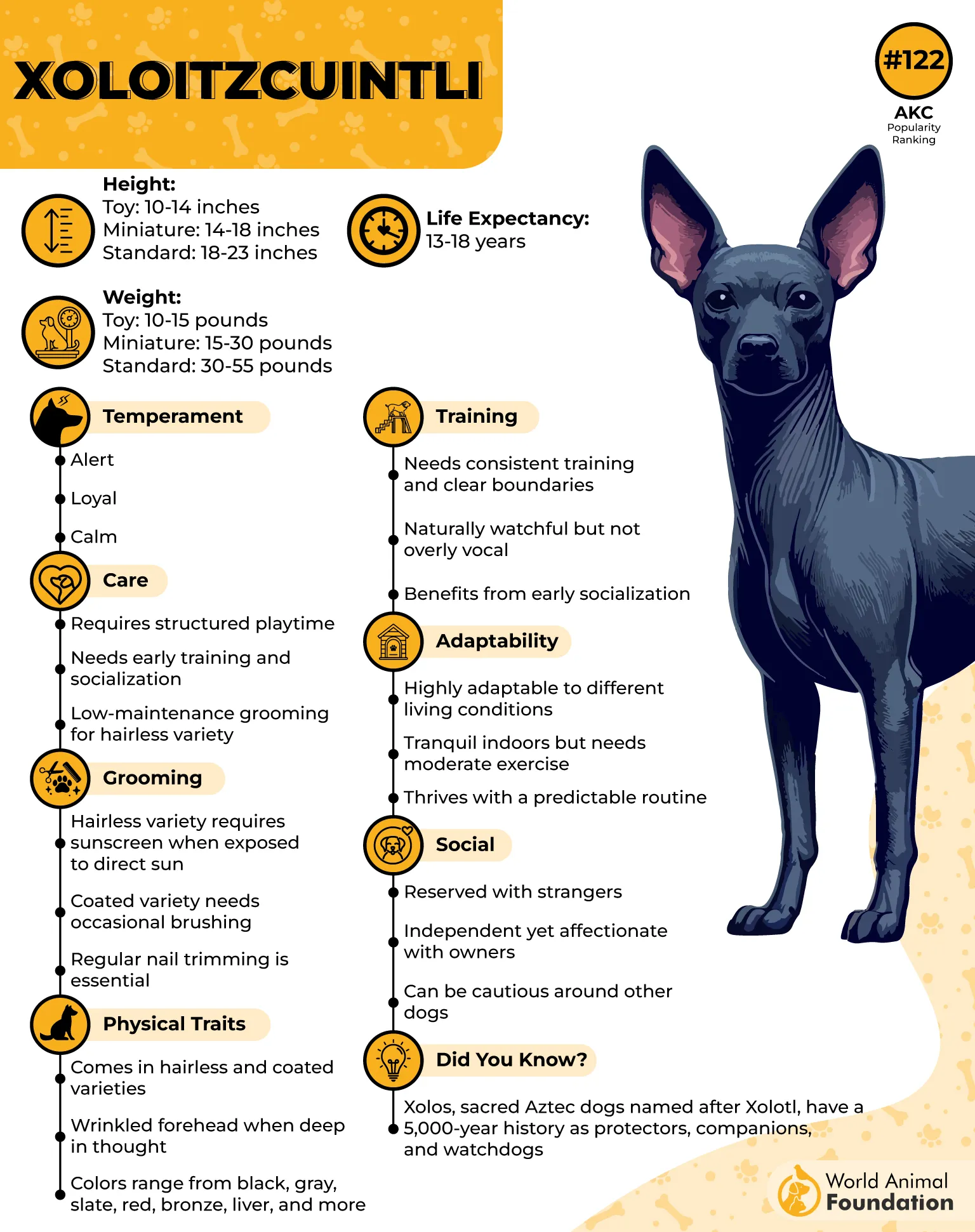
Xolos come in both hairless and coated varieties, but it’s their bare, almost alien-like skin and piercing eyes that capture attention and hearts alike.
Revered by the Aztecs and other ancient civilizations, these dogs were considered sacred protectors who had healing powers, especially because their warm skin was believed to ease ailments.
Cultural significance: Xoloitzcuintlis are living relics of Mexican heritage and mythology, embodying spiritual guidance, protection, and connection to the afterlife. Today, they’re proud ambassadors of Mexico’s rich history and make loyal, faithful companions.
Fun fact: Their hairless skin means they need sunscreen—yes, even dogs need to watch their tan! And despite their ancient lineage, Xolos often have the playful energy of puppies well into adulthood.
5. Pharaoh Hound
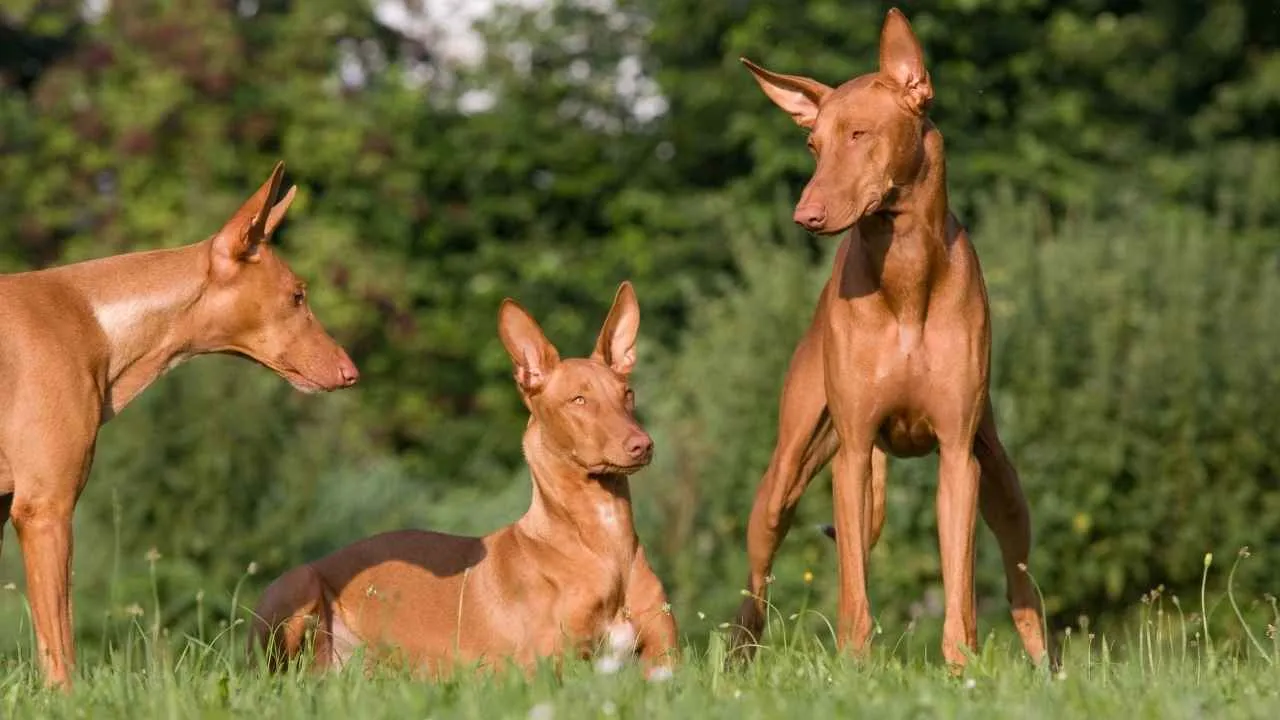
Step aside, modern-day sprinters—the Pharaoh Hound has been ruling the runway since ancient Egypt! This sleek, elegant hunter has a history so rich it practically comes with its own hieroglyphics.
Revered by the pharaohs themselves, these dogs were prized for their incredible speed, keen eyesight, and knack for hunting rabbits across the sunbaked deserts. According to the AKC, Pharaoh Hounds are elegant remnants of antiquity, descended from the coursers of the Bronze Age.
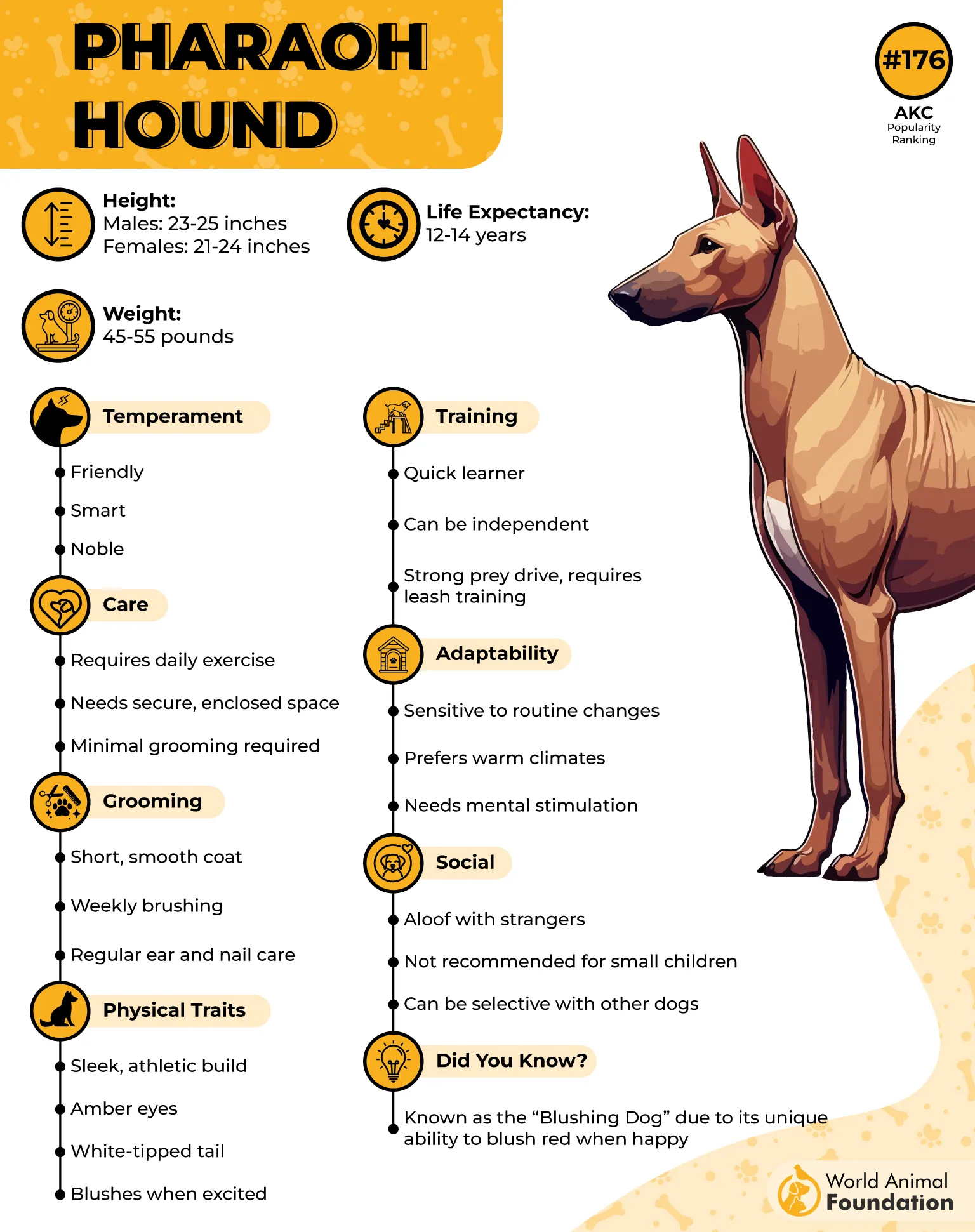
With a slim build and statuesque posture, the Pharaoh Hound stands 21–25 inches tall and weighs 45–55 pounds. They feature large ears, a slender muzzle, long legs, and a short coat that ranges from tan to golden-red hues.
With their shiny golden coat and expressive amber eyes, Pharaoh Hounds look like they just stepped out of an Egyptian mural, minus the sand, but with all the royal swagger. They’re smart, energetic, and possess an almost mystical charm, plus a playful streak that’ll keep you on your toes.
As sight hounds, they hunt primarily by sight and possess a strong prey drive, making them highly responsive to small, fast-moving animals.
Cultural spotlight: These dogs weren’t just hunting buddies; they were considered sacred animals, symbolizing grace, speed, and divine protection in ancient times.
Fun Fact: Today, they still carry that noble air, but with a modern twist—they love zoomies and belly rubs in equal measure.
6. Lhasa Apso
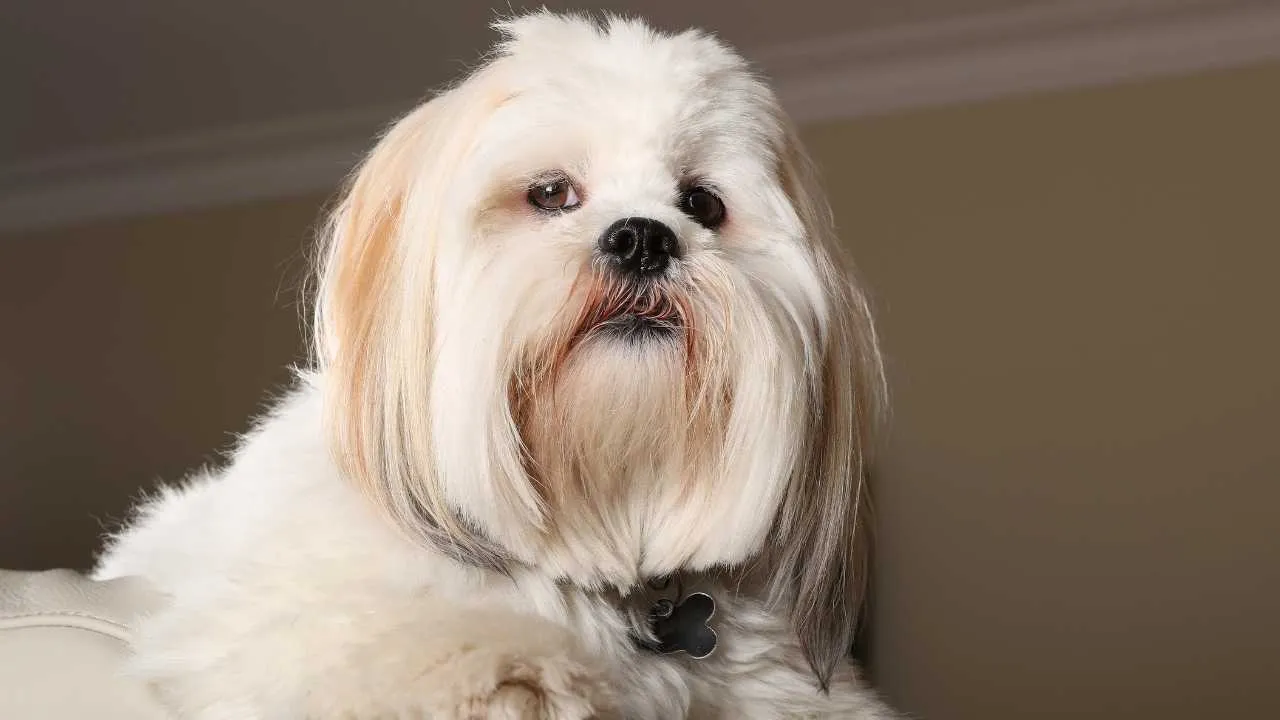
Meet the Lhasa Apso, the pint-sized powerhouse from the roofs of the Himalayas. These dogs weren’t just pets—they were temple guardians and spiritual companions in Tibetan monasteries, believed to bring luck and protect sacred spaces from evil spirits. Talk about a mystical resume!
The Lhasa Apso’s thick, long coat helped it endure the freezing Himalayan heights, living up to 13,000 feet above sea level. Their name loosely means “bearded lion dog.”
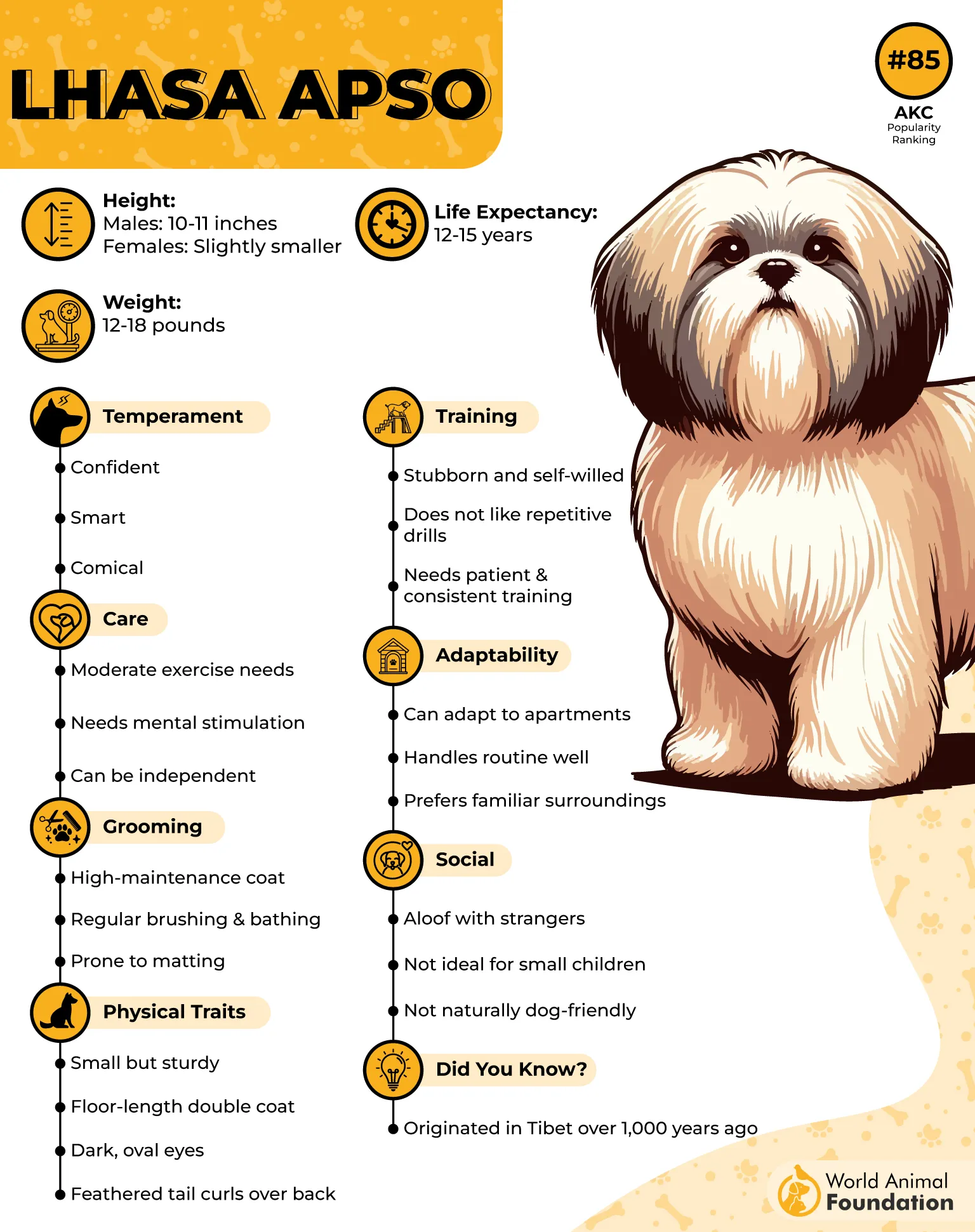
Today, this small but sturdy breed stands 10–11 inches tall and weighs 12–18 pounds. With good care, they enjoy a lifespan of 12–15 years, making them excellent family dogs.
With a luscious, flowing coat that seems straight out of a fairy tale, the Lhasa Apso carries itself like a wise old monk, even if it’s only the size of a loaf of bread. Don’t be fooled by their fluffy appearance—they have a spirited, confident personality that’s equal parts watchdog and cuddle-bug.
Cultural insight: In Tibetan culture, Lhasa Apsos were considered good luck charms and were often given as gifts to royalty and nobility. Their regal air and protective nature made them ideal companions for monks who needed a little peace of mind.
Fun fact: Their bark might be small, but it’s mighty! Lhasa Apsos make excellent alarm systems, announcing visitors with enthusiasm that definitely punches above their weight.
7. Shar Pei
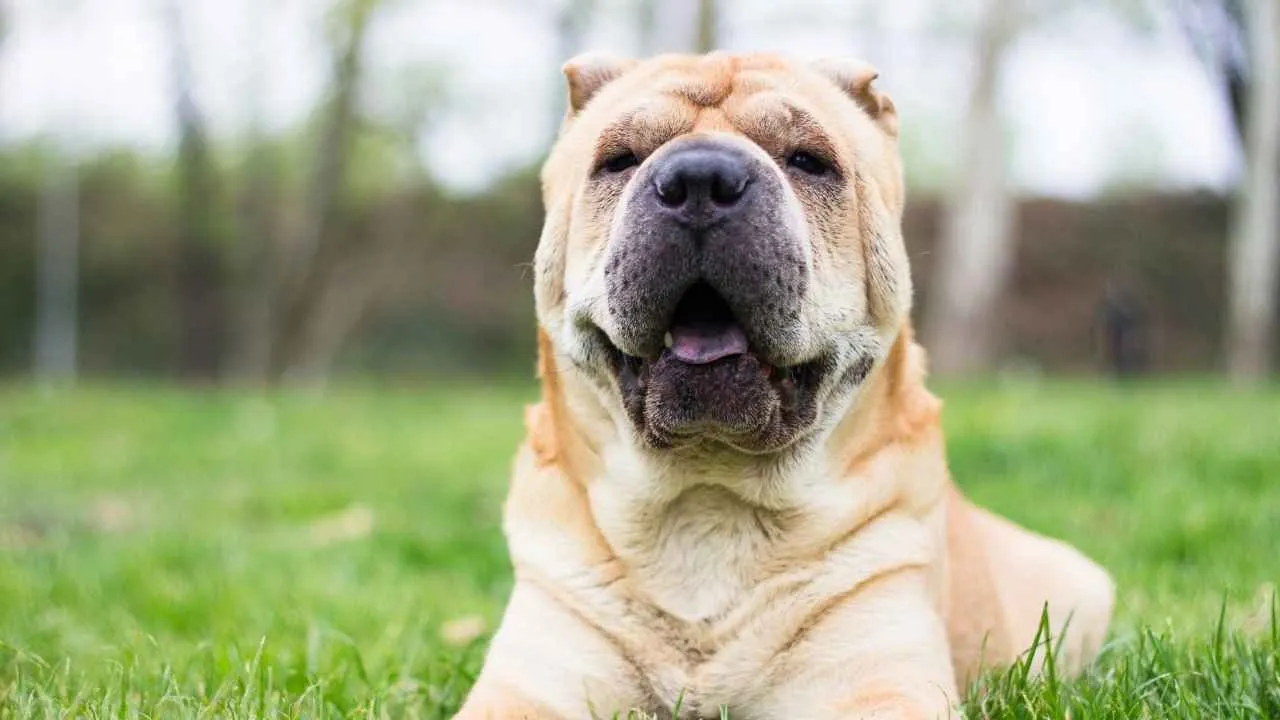
If wrinkles were a superpower, the Shar Pei would be the superhero of the dog world. This breed’s signature deep folds aren’t just for looks—they’re a part of a fascinating history that dates back thousands of years to ancient China.
Originally bred as a royal guard and fierce hunter, the Shar Pei’s unique appearance has made it a cultural symbol of resilience and uniqueness.
With their little hippopotamus-like muzzle and soulful eyes, Shar Peis are equal parts adorable and mysterious. They carry themselves with a calm, almost Zen-like demeanor, blending serious protector vibes with moments of silly puppy charm.
Just don’t expect them to be clingy — Shar Peis are independent thinkers who march to the beat of their own drum.
Cultural tidbit: The Shar Pei almost went extinct after the Chinese Revolution but was saved by dedicated dog lovers who saw their historical and cultural value. Now, these wrinkled faces walk proudly on dog show stages and into the hearts of fans worldwide.
Fun wrinkle fact: Those folds actually helped protect Shar Peis during dog fights by giving extra skin for opponents to grab—but hopefully, today, they’re just winning hearts!
8. Chihuahua
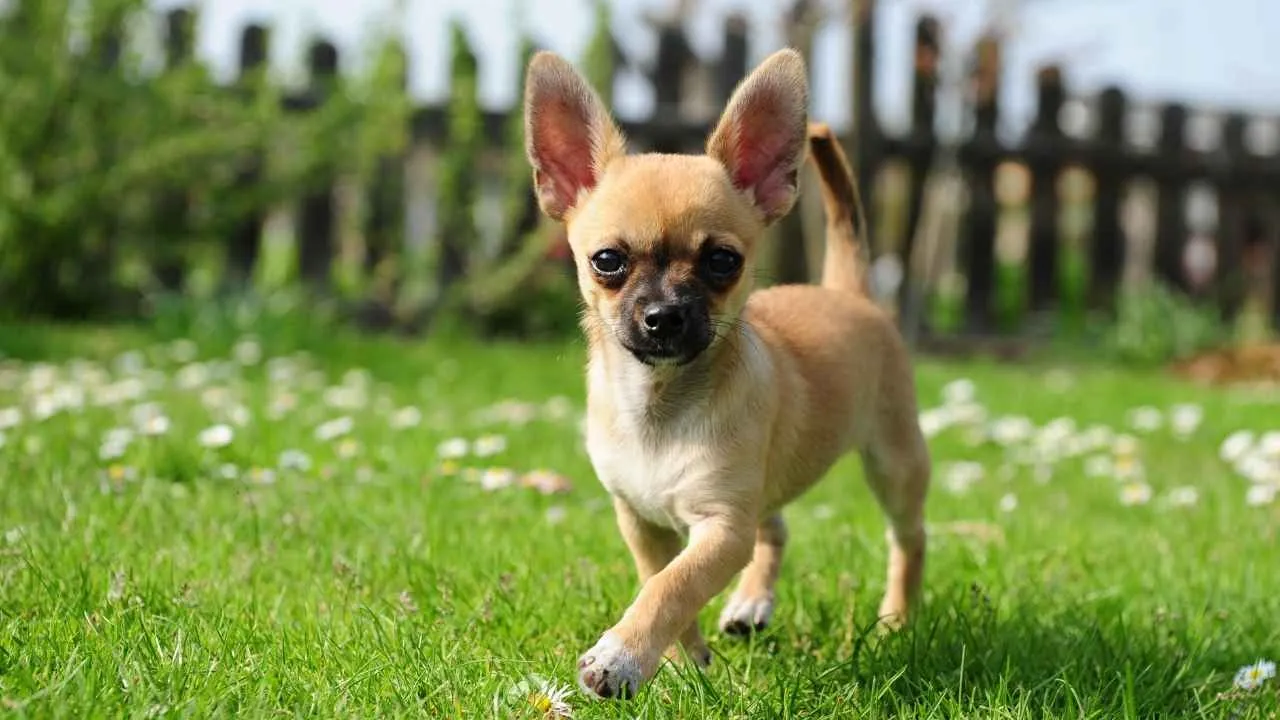
Don’t let their pint-sized stature fool you—Chihuahuas are tiny dynamos packed with more personality than a soap opera cast.
Hailing from Mexico, this breed carries a deep cultural significance linked to the ancient Toltec and Aztec civilizations, where small dogs were believed to have spiritual powers and were sometimes even companions to royalty.

Chihuahuas are famous for their giant-dog attitude in a pocket-sized package. They’re fiercely loyal dogs, sometimes a little sassy, and always ready to announce visitors with their signature yappy bark. But beneath that bold bravado beats the heart of a devoted, loving companion.
Cultural charm: These pocket rockets often symbolize good luck and protection in Mexican culture.
Fun Fact: Their name comes from the Mexican state of Chihuahua, where they were first discovered.
9. Chow Chow
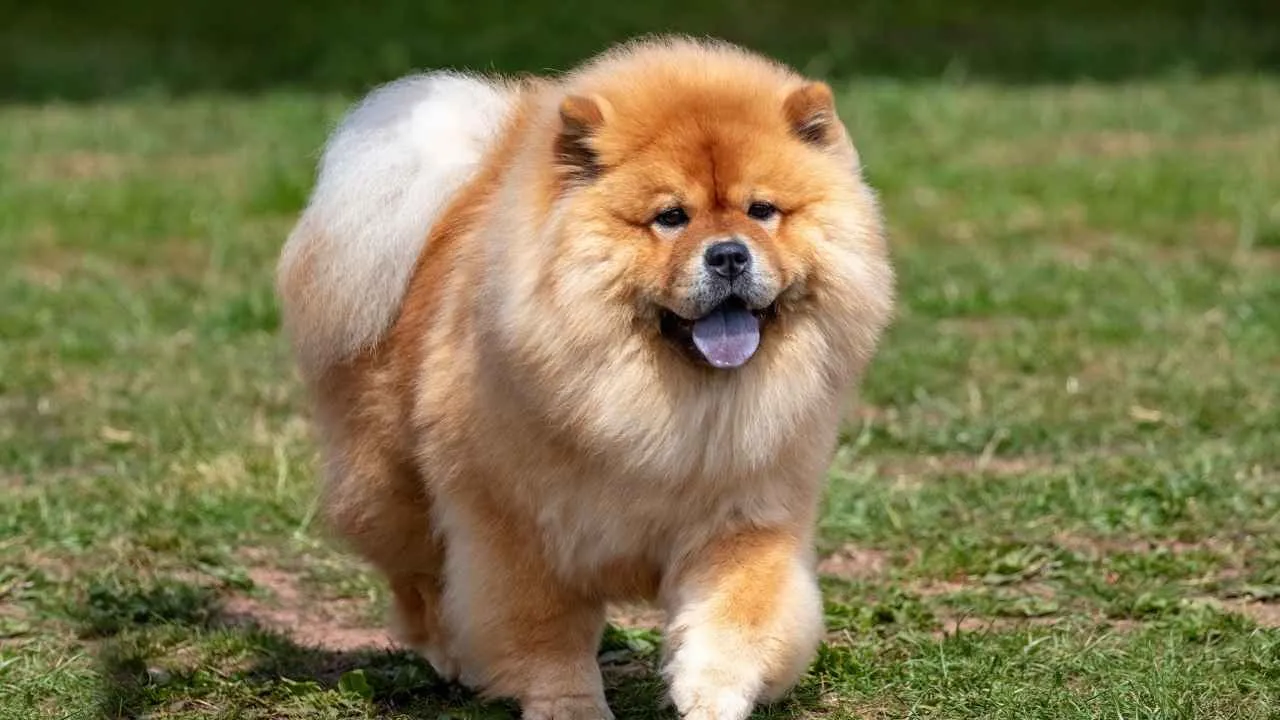
When it comes to dogs dripping with culture and charisma, the Chow Chow is an absolute showstopper. Picture this: a fluffy, lion-maned pupper who strolls around with the kind of dignity that says, “I’m not just a dog—I’m history in fur.”
Originating from ancient China, the Chow Chow isn’t just a pet; it’s a walking cultural icon steeped in tradition and mystery.
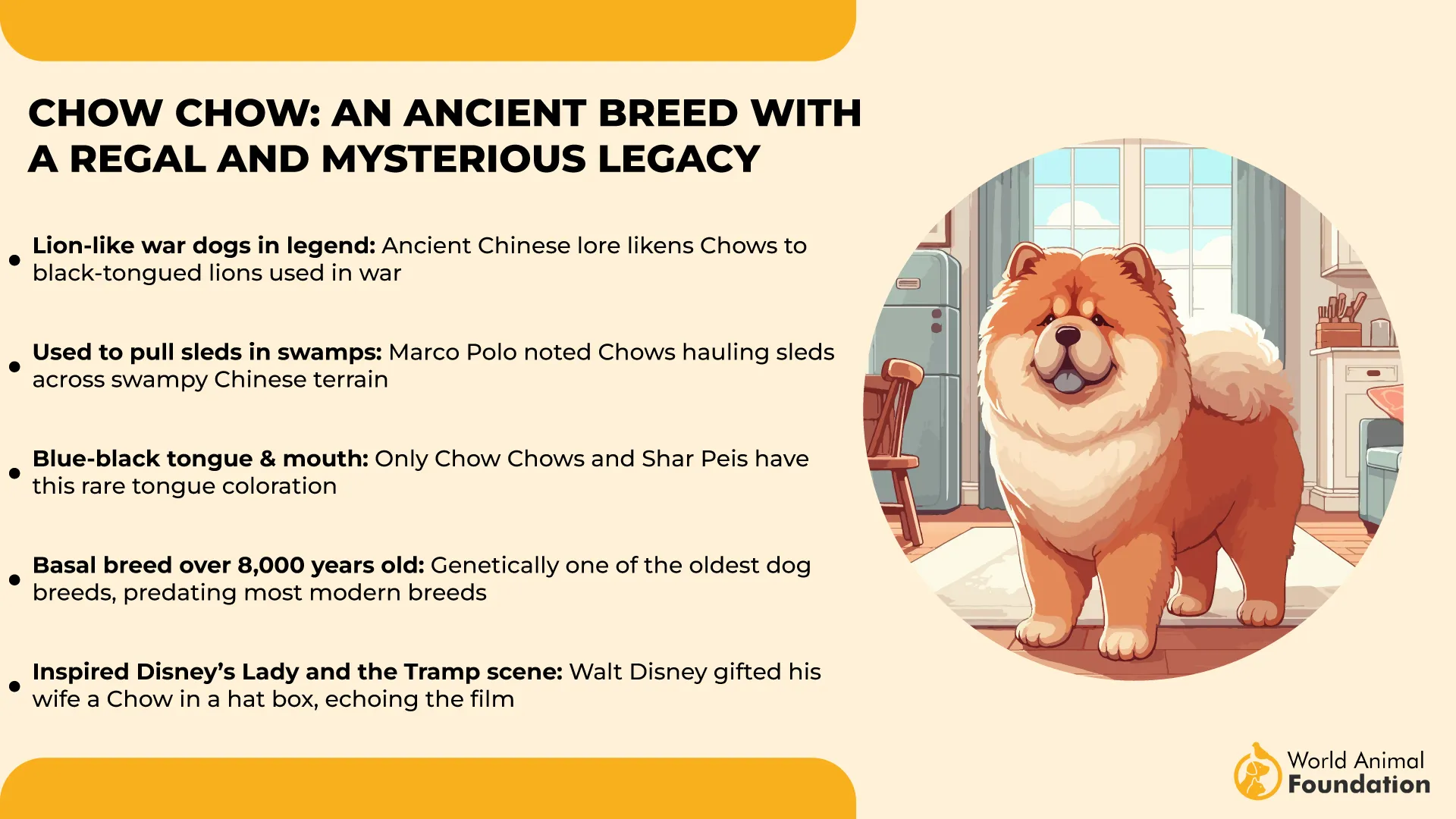
The Chow Chow was once a prized companion of emperors, guarding palaces and chilling in royal courts. Their thick double coat and impressive mane gave them a look fit for the throne—and those famously unique blue-black tongues? Talk about a conversation starter! Scientists are still a bit baffled, but it only adds to their enigmatic charm.
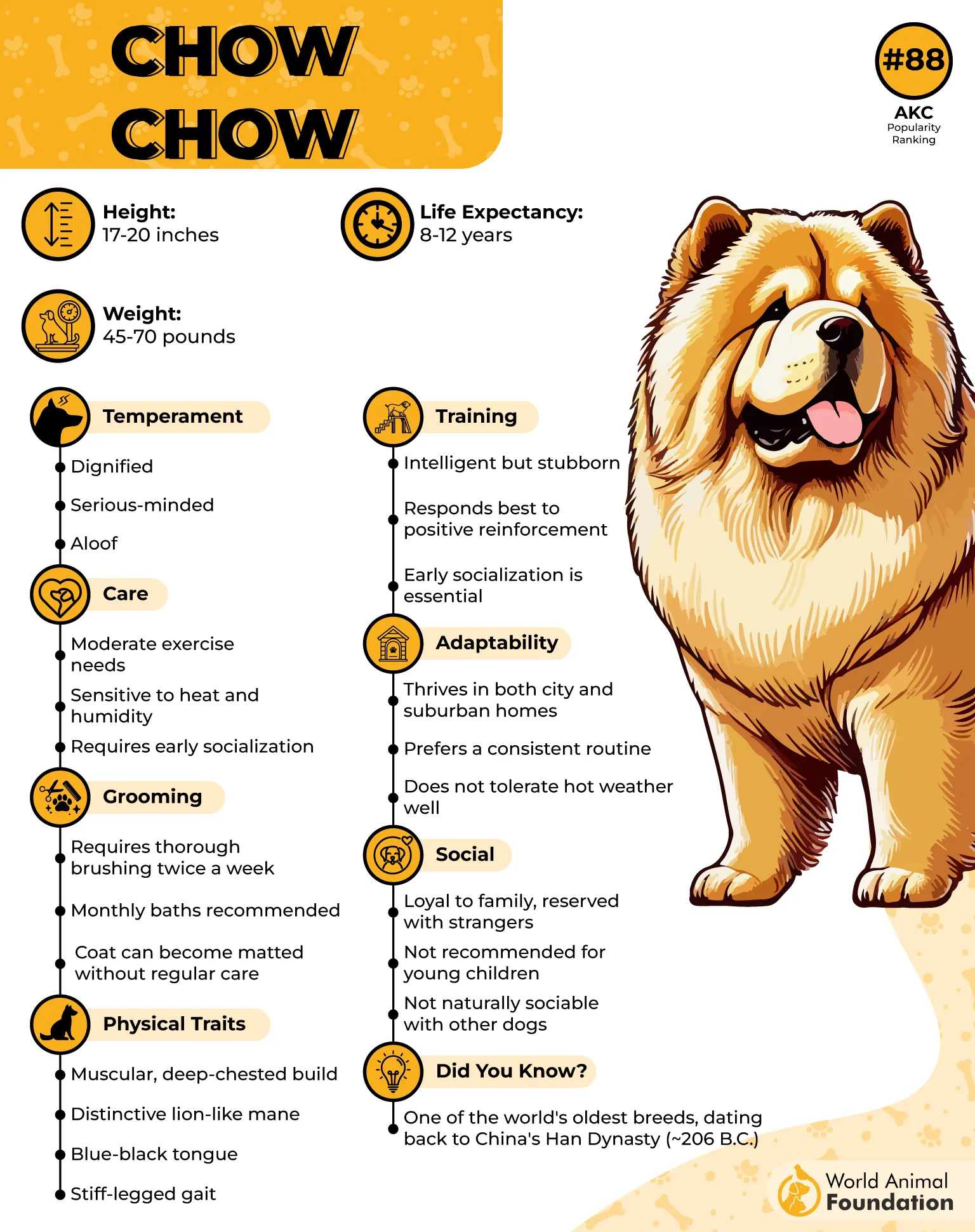
This breed doesn’t do clingy or overly needy. Nope, Chow Chows have a reputation for being a little reserved, sometimes downright aloof, but fiercely loyal to their inner circle. Think of them as the cool aristocrats of the dog world — dignified, independent, but with a soft spot for their favorite humans.
Culture meets curiosity: Beyond their royal status, Chow Chows have made appearances in Chinese art, folklore, and even ancient scrolls, symbolizing strength and protection. They’ve trotted into modern pop culture too, from movies to memes, capturing hearts worldwide.
Fun Fact: So, if you’re looking for a pup with history, style, and a sprinkle of sass, the Chow Chow might just be your furry soulmate. Just be prepared for a dog that knows it’s the star of the show—and isn’t shy about stealing it.
Conclusion
Throughout history, dogs with cultural significance have played a pivotal role in shaping beliefs, stories, and traditions. From Greek mythology, where dogs were seen as spiritual guides and symbols of protection, to popular culture with tales like Lassie Come Home and the bronze statue honoring Lassie’s journey, these four-legged companions reflect the deep bond between humans and dogs. Whether offering emotional support, serving in sacred spaces, or being depicted as guardians in various forms, dogs have always held a significant role in society.
Their unconditional love, faithful companionship, and enduring bond with humans highlight their importance beyond just everyday life. From the loyal German Shepherd to furry friends around the world, dogs share an enduring legacy of companionship, spiritual protection, and even ties to the goddess archetype, symbolizing protection and trust. As we honor dogs today, we celebrate the timeless bond that humans and dogs have shared across generations.


